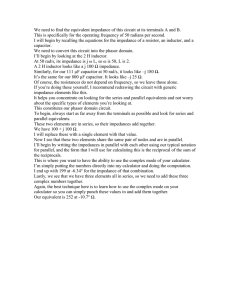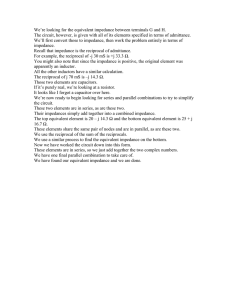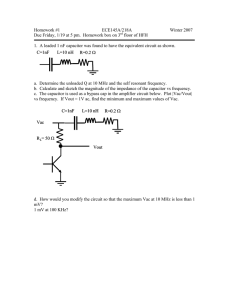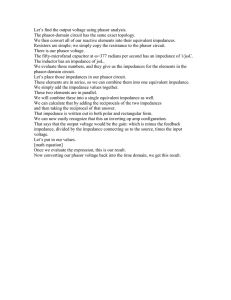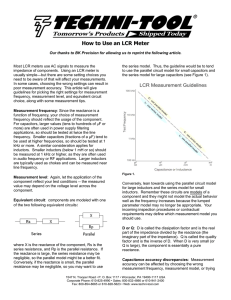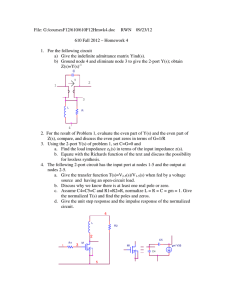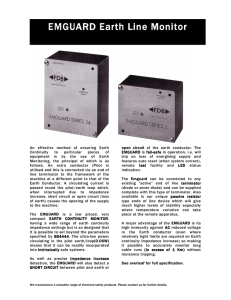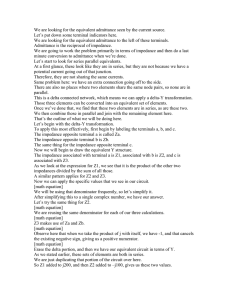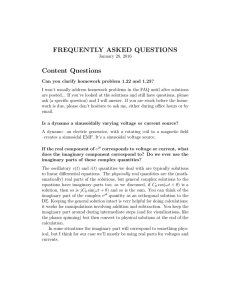We are looking for the single equivalent resistance and capacitance,... inductance, seen by the source.
advertisement
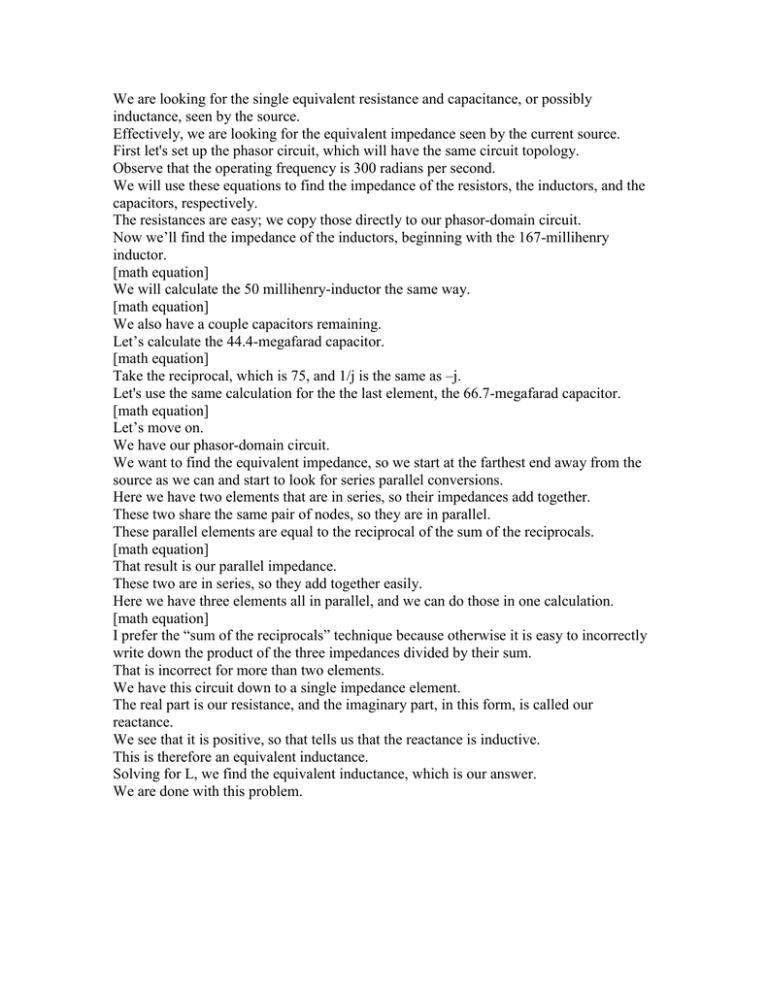
We are looking for the single equivalent resistance and capacitance, or possibly inductance, seen by the source. Effectively, we are looking for the equivalent impedance seen by the current source. First let's set up the phasor circuit, which will have the same circuit topology. Observe that the operating frequency is 300 radians per second. We will use these equations to find the impedance of the resistors, the inductors, and the capacitors, respectively. The resistances are easy; we copy those directly to our phasor-domain circuit. Now we’ll find the impedance of the inductors, beginning with the 167-millihenry inductor. [math equation] We will calculate the 50 millihenry-inductor the same way. [math equation] We also have a couple capacitors remaining. Let’s calculate the 44.4-megafarad capacitor. [math equation] Take the reciprocal, which is 75, and 1/j is the same as –j. Let's use the same calculation for the the last element, the 66.7-megafarad capacitor. [math equation] Let’s move on. We have our phasor-domain circuit. We want to find the equivalent impedance, so we start at the farthest end away from the source as we can and start to look for series parallel conversions. Here we have two elements that are in series, so their impedances add together. These two share the same pair of nodes, so they are in parallel. These parallel elements are equal to the reciprocal of the sum of the reciprocals. [math equation] That result is our parallel impedance. These two are in series, so they add together easily. Here we have three elements all in parallel, and we can do those in one calculation. [math equation] I prefer the “sum of the reciprocals” technique because otherwise it is easy to incorrectly write down the product of the three impedances divided by their sum. That is incorrect for more than two elements. We have this circuit down to a single impedance element. The real part is our resistance, and the imaginary part, in this form, is called our reactance. We see that it is positive, so that tells us that the reactance is inductive. This is therefore an equivalent inductance. Solving for L, we find the equivalent inductance, which is our answer. We are done with this problem.
